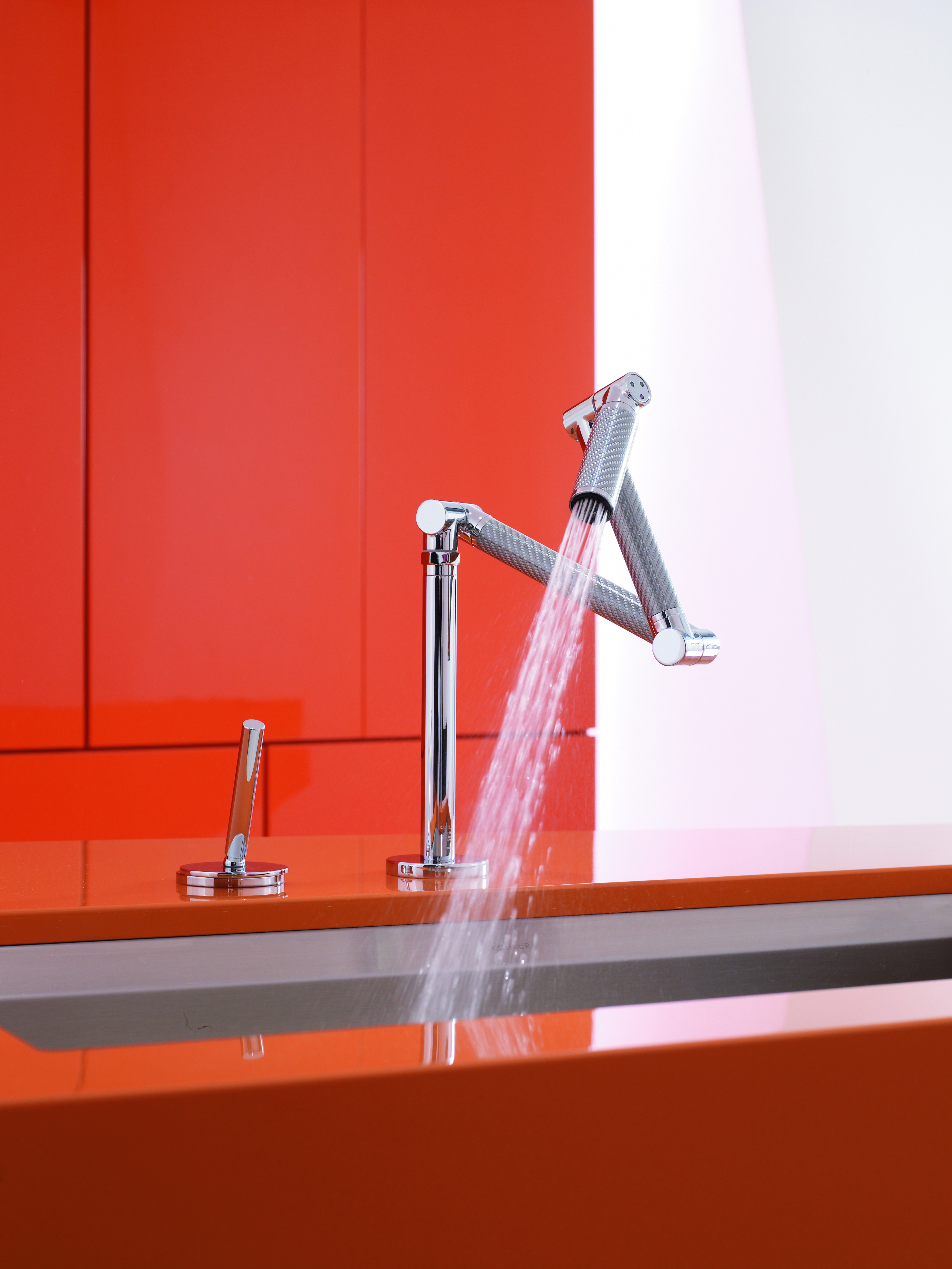New kitchen faucet design

Design and functionality are the key drivers behind any new product, particularly in an age of high consumer expectation. It is therefore imperative for any company whose product is based on design to continue to pursue the ongoing challenge of matching function with a pleasing aesthetic to meet buyer demand.
Kohler has been at the forefront of design for many years. This is what attracted Kohler Kitchen Faucets senior product manager, Les Petch to the company.
Les, in collaboration with senior industrial designer Niels Eilmus, has overseen the manufacture of the new Karbon range for which considerable testing was done on new technologies as well as consumer demand.
“The key driver for a lot of kitchen faucets is based on consumer research, in particular we look at how consumers use the kitchen,” says Petch. “One of the interesting areas we discovered was that while people appreciated the functionality of pullout faucets, they would enjoy the same flexibility as the pullout, while having both hands free.”
This means that the user can position the faucet and leave the sprayhead where it’s needed, thereby freeing up both hands for kitchen prep and clean-up tasks.
The original design impetus of the Karbon faucet was inspired by lighting and construction equipment with articulating joints.
In the past, faucet tubes tended to be inflexible or move only in a series of basic pre-determined directions. The Karbon range is made up of a series of flexible tubes that can be manipulated in any manner of kitchen-functional positions that meet household demands.
Research was undertaken to find out where joints separated in previous lines and where the weight was light enough to offer little resistance to the joint. As most faucets are made with brass tubing that requires strong resistance and therefore compromises practical use, Kohler had to look at a different compound to meet their functionality requirements.
This experimentation led them to carbon fibre, a strong, yet lightweight and flexible material that allows for an aesthetically pleasing look.
The actual construction of the faucet is a combination of traditional brass and innovative carbon fibre composite tubing. The logic behind the use of carbon fibre lies in its superior strength and light weight, allowing for tight movement tolerance and exceptional performance. The joints connecting the four sections of the faucet employ a novel patented technology that provides exceptional resistance to support the spout while allowing for smooth and effortless handling.
So after 18 months of research and development – and over 12 different prototypes — a series of parameters was established including: ensuring movement around the sink and modelling the movement in 3D and developing functionality around sink-based activities such as scrubbing a pan or filling a pot.
“The key was to differentiate ourselves and evaluate against the test program, appraising what we had with consumers through a series of in-depth trials,” says Petch, who goes on to say that the kitchen is full of experiential events and to provide that experience requires strong, unique and pleasing design.
The R&D team at Kohler worked through the design component by component, investigating how various joints operated and what materials worked best.
Yet, as Petch points out, technology is only one aspect of success in kitchen design.
“One of the great advantages is consistent and close attention to what the consumer is looking for; this is only one product but it is advancement consumers want and new technology is a measurement of that.”
Design and technology is in a constant state of change. It has seen the faucet morph from a static, plain tap to something that reflects fluid, streamlined movement.
The Karbon faucet is unique, and although it won’t suit every application, it leads the world in design trends and functionality. It relies on flexible connections and installation rings and installers will want to take note that the joystick valve requires non-standard holes of two inches in diameter.
“Form really does follow function, in this case,” says Petch. “But that doesn’t take away from the fact that the Karbon faucet is an outstanding piece of modern industrial design.”
